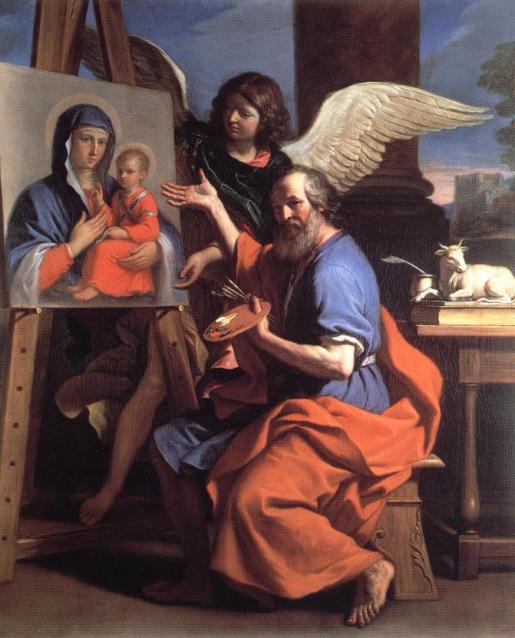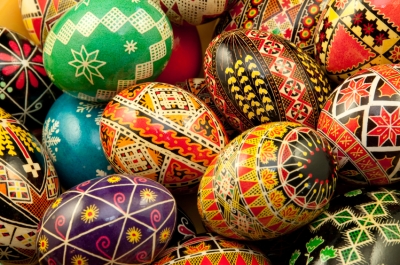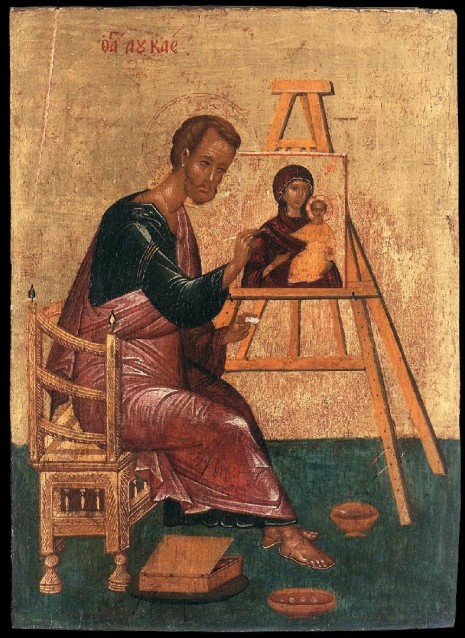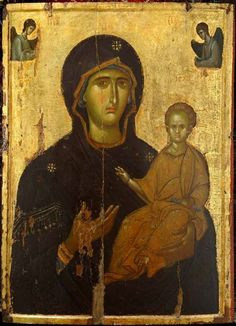There were some interesting responses to my article about what we ought to call the process of creating icons, here. In fact a lively Facebook discussion ensued.
The more it developed the more it became clear to me that I will not use write and it relates to the characteristics of the English language. As Adam Wood pointed out (some may know his name from the Chant Cafe) the person who writes a play is called a ‘playwright’. That’s wright, not write, someone who crafts the drama. This elevates the status of the playwright from a mere writer. Similarly, someone who is skilled with words can be called a ‘wordsmith’, (although this is perhaps more colloquial).
So this seems to suggest that in English it’s actually the inverse of what is being imposed ie ‘painting’ is higher than ‘writing’. If we wish to elevate the status of the writer, then we attribute to his ‘craft’ the status that we give to the work done by an artisan. And if we wish to elevate the status of the icon painter who creates icons we emphasize his craftsmanship. So in English, painter is fine – and better than ‘writer’; as would be iconwright or iconsmith if we want to affect a bit faux-intellectualism for good measure.
This is the reverse of the Greek and the Slavic languages such as Russian and Ukrainian (which refers to the process of decorating eggshells as ‘writing’ too, a FB contributor told us).
Furthermore, if we refer to the icon painter, in Greek graphos, as a writer, then to be consistent we should also say that the photographer writes a photograph; and cartographer writes a map!
I think its easier to stick to plain English. I have trouble enough getting that right without worrying about Greek, Russian and Ukrainian as well! I hope no one is upset by the use of the word ‘paint’…but as the saying goes, if you want to make an omelette you have to crack a few eggs (but hopefully not these beautifully crafted Ukrainian ones).
Incidentally, the painting at the top is St Luke Displaying His Painting of Our Lady by Guercino, the Italian 17th century baroque holy painter/smith/wright.
Notice how he is aware of the tradition that the St Luke’s painting was a Virgin Hodegetria, one of the standard iconographic prototypes.






As a writer, I like the notion of icon writing. One attempts, in prose or poetry, to make an image of the world and the relation of man and God. Works like The Divine Comedy or The Lord of the Rings do that very well, illustrating Dorothy Sayers’ Trinitarian view of artistic activity.
LikeLike
I’m not sure I understand your argument. Why does this mean that we call the creation of icons ‘writing’? One might argue that when that image is created in words, you call it writing; when the image is done in paint, you call it painting. Both writing and painting can be inspired or uninspried, done well or done badly – that is changed by what you call the process. Is it?
LikeLike
I’m not saying that the creation of icons ought to be called writing — painting an icon and writing a story or poem are very different things. I’m saying that the idea or metaphor suggested by the phrase “icon writing” appeals to me as a writer. Not only do I desire and pray that my writing reflects God’s truth the way icons do, but the incarnational theology of icons expresses the goal admirably well. I seek to clothe the truth in words as the icon painter clothes it in paints and gold leaf.
LikeLike
Totally agree. Writing icons is totally wrong. Paint paint paint we paint.
LikeLike